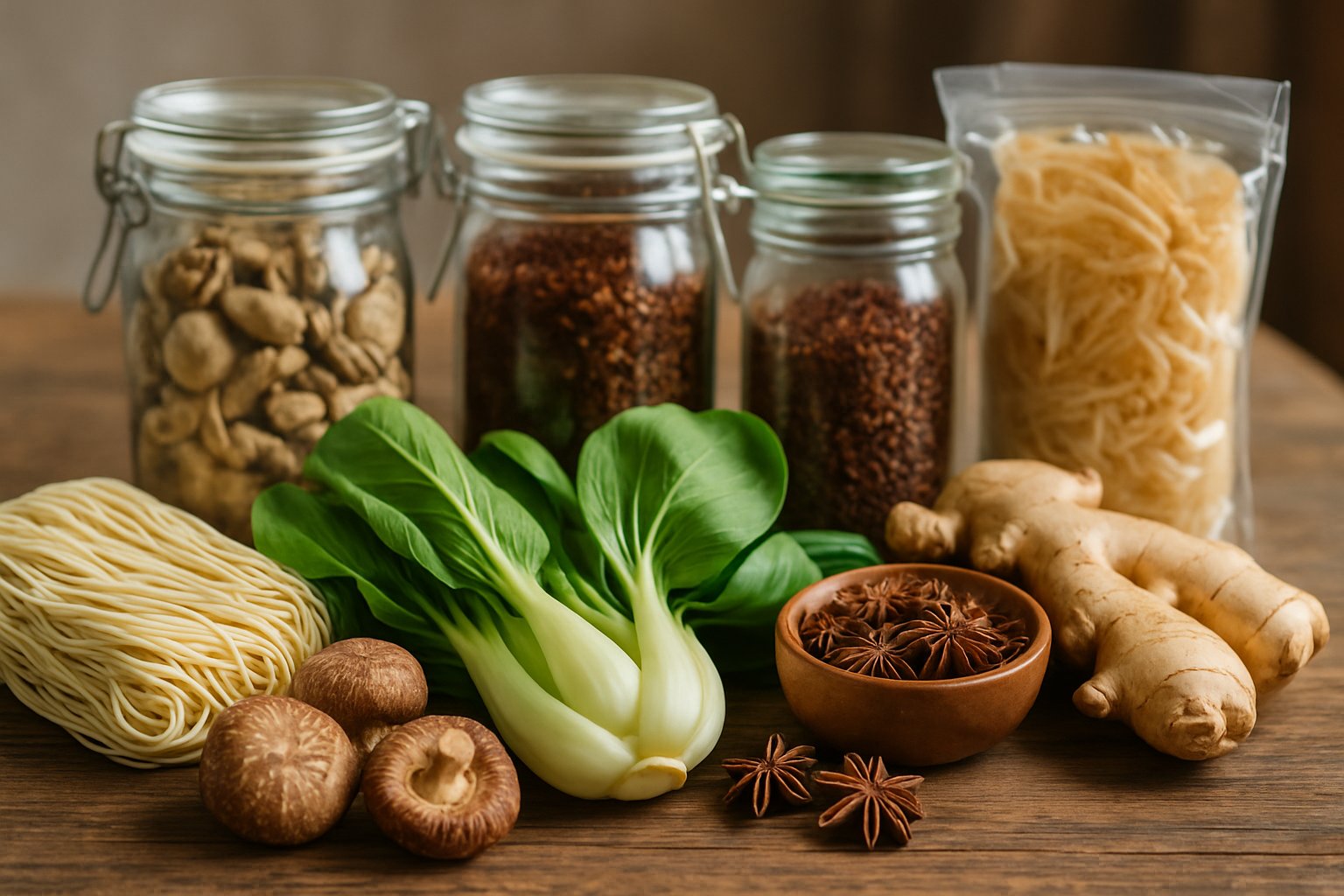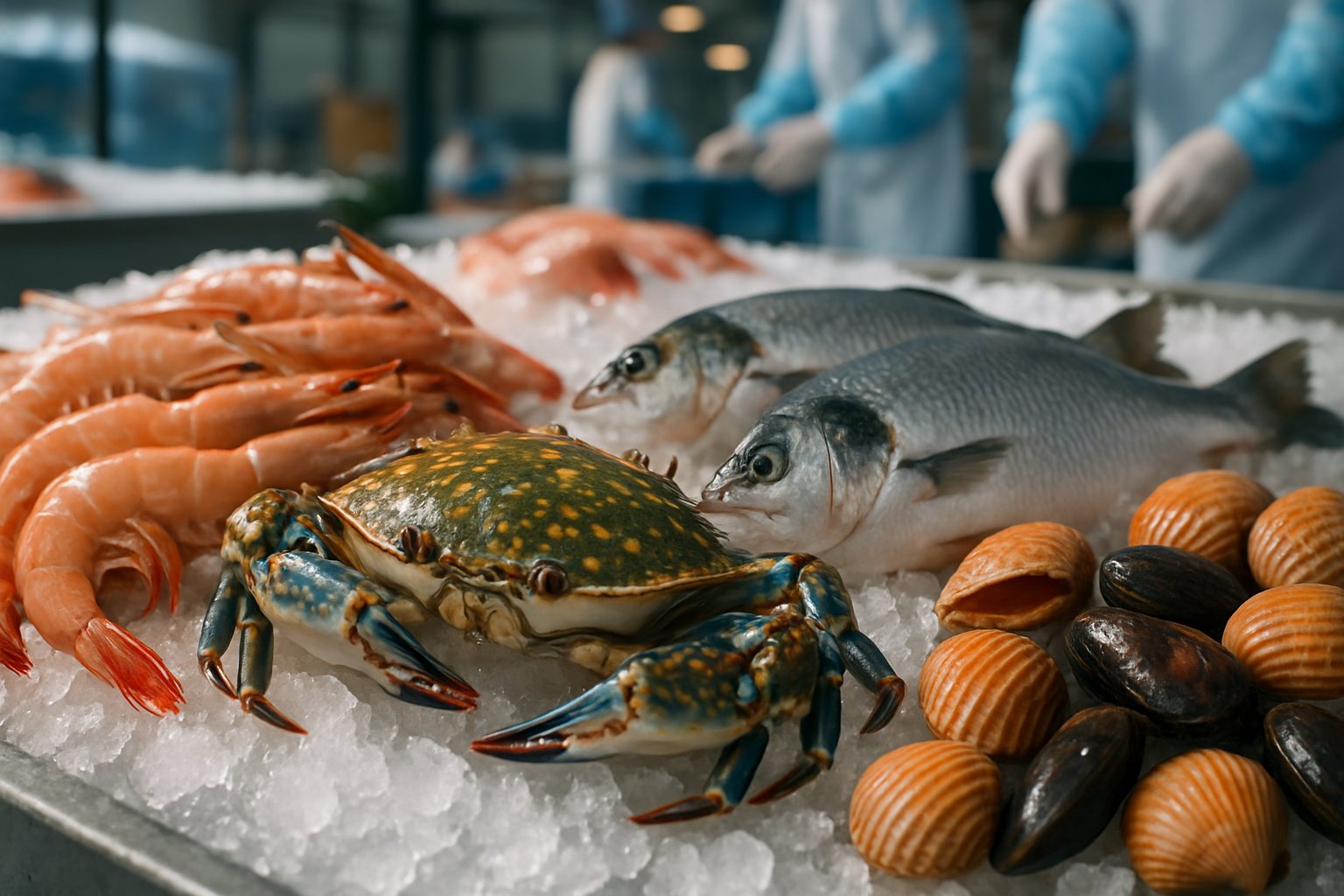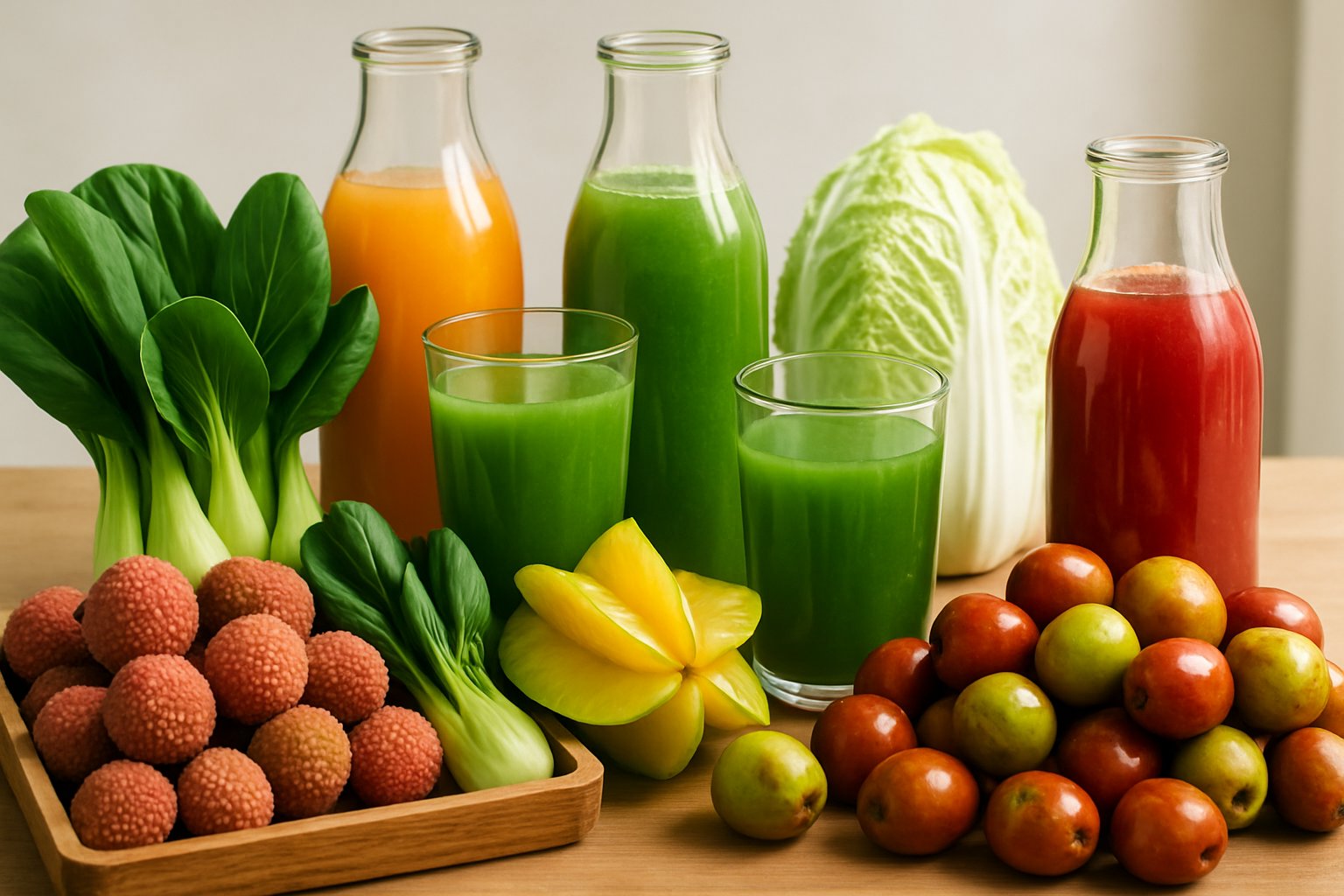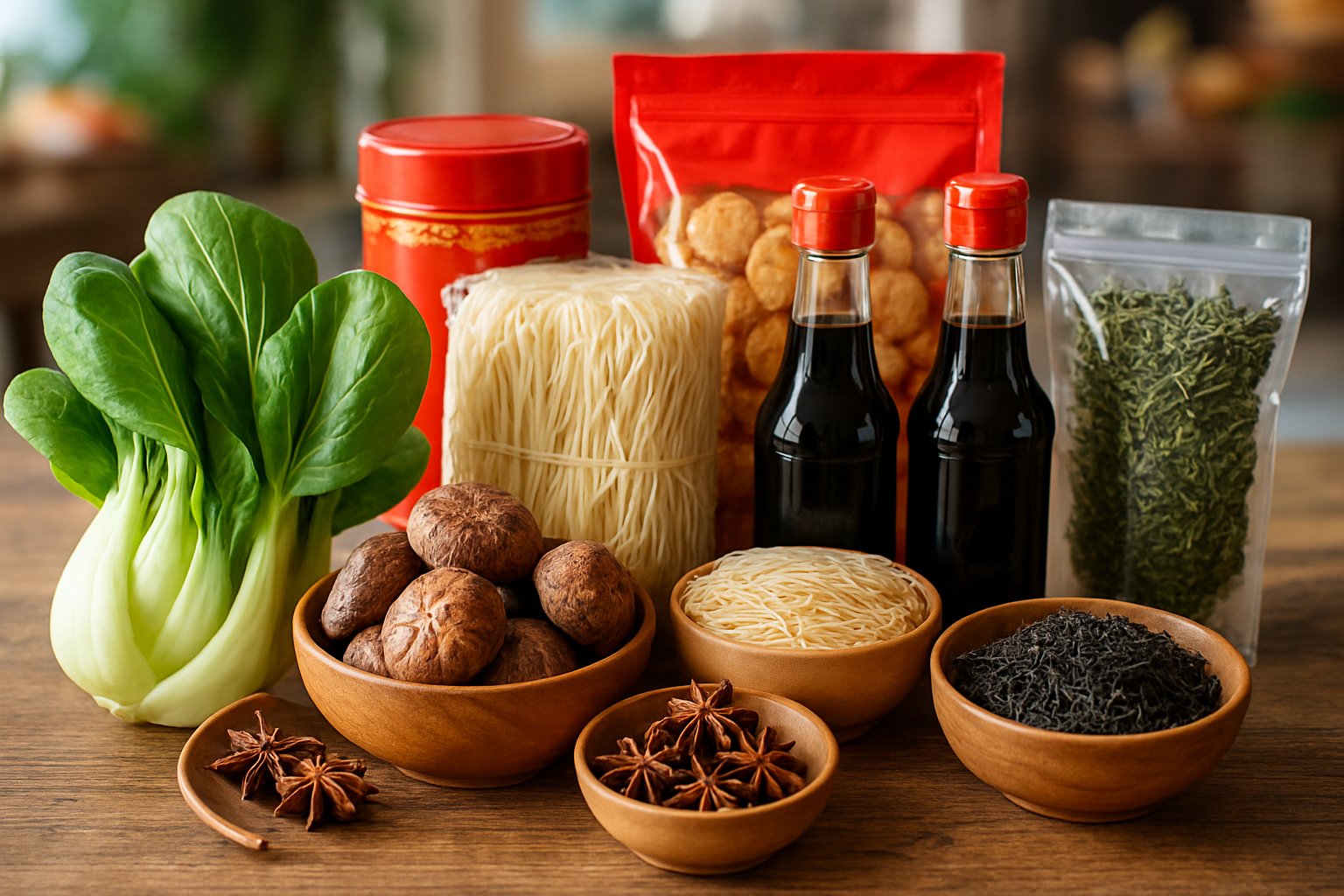If you’re curious about what food we import from China, the list is pretty extensive. The U.S. imports many food products from China, such as fresh and processed fruits and vegetables, snack foods, spices, and tea
While China is a top supplier of items like apple juice, garlic, canned mandarins, fish, and shrimp, these still represent less than 1% of the entire U.S. food supply.
You’ll also spot seafood like tilapia and processed goods such as apple juice and canned products. These foods show up in daily meals and special occasions, connecting you to the flavors and traditions of China.
Importers run quality checks to keep these foods safe and up to international standards.
Sometimes, you might even see black pepper or other items with unclear labels that actually came from China. Understanding what food we import from China gives you a peek into just how global our food supply has become.
What Food We Import from China

Many foods from China end up in your grocery cart, whether you realize it or not. They fall into a few main categories—seafood, fresh produce, and pantry staples that show up in all kinds of recipes.
Main Food Types: Seafood, Produce, Pantry Staples
Seafood imports from China are a big deal. Fish like tilapia and cod are farmed there and shipped to the U.S., mostly because they’re affordable and available all year.
China also processes and exports shrimp and scallops. Fresh produce coming from China includes garlic, mushrooms, and some fruits, all of which add something special to your cooking.
Pantry staples like rice and noodles are another major import. China ships out rice varieties and instant noodles that have become household basics for many Americans.
These staples help keep meals interesting and accessible, no matter where you live.
Why the U.S. Depends on Chinese Food (Cost, Scale)
Let’s be honest—the U.S. leans on Chinese food imports mostly because of the price and sheer volume. Chinese farms and factories churn out massive amounts of food at lower costs than most other places.
This keeps prices down for shoppers. With China’s production scale, they can fill huge orders for staples like rice and noodles quickly and reliably.
By importing from China, companies save money and keep store shelves stocked with the foods you expect to find.
Discover all the essentials in China Food Safety Law: 2024 Guide.
Seafood Imports & Safety

Seafood from China shows up in a lot of grocery stores. You’ll see shrimp, tilapia, and cod pretty often. But there’s always a conversation about safety and quality.
Shrimp
China ranks as one of the top exporters of frozen shrimp to the U.S. These shrimp usually go through processing that might involve additives for better shelf life or texture.
The FDA inspects shipments and sometimes issues alerts if they find filth or unauthorized additives. Contaminants like pesticides and heavy metals pop up occasionally, which is a real concern.
It’s smart to stick with trusted brands and check packaging dates and labels when you’re buying shrimp from China.
Tilapia
Chinese farms raise a lot of tilapia, which then gets shipped all over the world. People like it for the mild flavor and low price.
But there have been questions about farming practices, especially around antibiotics and water quality. The FDA has flagged some shipments for unsafe residue levels.
If you want to play it safe, look for clear labeling and certified sources when buying tilapia.
Cod Share—FDA Alerts on Filth/Additives Facebook
Cod imports from China don’t always make it through FDA screening. The agency tests for filth and chemical additives, blocking unsafe shipments from entering the U.S. market.
Social media, even Facebook, sometimes spreads these warnings fast. If you’re worried, keep an eye on official alerts before picking up cod from China.
Stay ahead of risks—read What Is Illegal in China? Stay Safe and Informed.
Produce & Juice from China

A lot of produce and juice in your kitchen could have roots in China. Imports range from everyday garlic to a big share of processed apple juice.
Knowing where these foods come from can help you make choices that fit your needs.
Apple Juice (31–70%)
China supplies a big chunk of the apple juice you’ll find in U.S. stores. Some estimates say anywhere from 31% to 70% comes from China.
They process the juice in massive factories before shipping it out. Because it’s cheap and available in huge quantities, many companies rely on it.
Check the product label if you’re curious about the country of origin. Chinese apple juice ends up in both pure juice and blends.
Garlic (~23–50%)
Roughly a quarter to half of the garlic eaten in the U.S. comes from China. It’s usually cheaper than American-grown garlic and fills in the gaps during off-seasons.
Chinese garlic is everywhere, from restaurants to grocery stores. Some people worry about pesticides and labeling, so it’s not a bad idea to check food safety info before buying imported garlic.
Mushrooms
China is a powerhouse when it comes to mushrooms. The U.S. brings in shiitake, enoki, and button mushrooms from Chinese farms, which use advanced growing methods for steady quality.
You’ll spot Chinese mushrooms fresh, canned, or dried. They’re a cost-friendly option for anyone who loves mushrooms in their meals.
Others
China also exports green onions, ginger, and specialty veggies to the U.S. These products are valued for their price and the fact that they’re available when American crops aren’t.
You may not always see them in the produce section, but they often show up in frozen, canned, or processed foods. These imports make it easier to find variety all year long.
Understand market dynamics in How The Inflation Rate in China Impacts Your Investment.
Packaged Foods & Ingredients

Walk through any big grocery store and you’ll notice plenty of packaged foods and ingredients from China. These add unique flavors and cover everything from household basics to specialty items for Asian recipes.
Tea, Spices, Sauces, Vitamins, Sweeteners & Preservatives
China is huge in the tea world—think green, black, and oolong. These teas are well-loved for their flavor and quality, so they’re imported in large amounts.
Spices like ginger and chili oil, plus sauces such as soy and oyster sauce, also come from China. These are must-haves for authentic Chinese cooking.
China exports sweeteners like maltose syrup and glucose, which food companies use in snacks and drinks. Vitamins and preservatives from China help processed foods last longer or bump up nutrition.
These ingredients end up in both everyday meals and special dishes, so it’s no wonder they’re so common in American kitchens.
Safety Risks & Refusals
When you pick up food imported from China, you might not realize that some products never even make it to store shelves. U.S. authorities refuse certain foods due to safety issues—like additives, labeling problems, or contamination.
Knowing about these risks can help you make smarter choices.
FDA Refusals for Additives, Labeling, Contaminants
The FDA checks food imports from China for banned additives or unsafe chemical levels. Sometimes, they reject shipments for illegal preservatives or coloring agents.
Labeling is another sticking point. If products don’t have proper country-of-origin tags or have misleading ingredient lists, they get turned away.
The FDA has also found contaminants like pesticides, heavy metals, or bacteria in some shipments. When that happens, they refuse the imports to protect your health.
Tracking these refusals shows how tough it is to keep food standards high when importing from China.
Tariffs & Price Impact
Tariffs have made a lot of Chinese food imports more expensive. You’ll feel it at the checkout, especially with packaged foods, ingredients, and even food packaging materials.
New 34–145% Tariffs May Raise Grocery Costs
Since 2025, tariffs on Chinese food imports have ranged from 34% up to a whopping 145%. The exact rate depends on the product.
Packaged snacks, some seafood, and food ingredients are all affected. While big grocery chains sometimes absorb these costs, smaller stores usually pass them straight to you.
Groceries that rely on Chinese imports will probably cost more. Even the packaging—plastics and metals—comes with higher tariffs, so the container itself can bump up your bill.
Consumer Outlook
As you buy food imported from China, expect some changes in prices and what’s available. A few different factors could shake up what you see in stores and how much you pay.
Prices May Rise
Higher prices are likely for some Chinese imports. Tariffs, shipping costs, and supply chain hiccups all play a part.
We’ve already seen this happen with electronics and toys, so it’s not a stretch to expect the same with food. Fruits, veggies, and seafood from China could all get pricier.
Inflation around the world adds even more pressure. If supply stays tight and demand remains high, you’ll probably notice the difference at checkout.
Supply Could Shift Country or Local
Some foods you used to get from China might start coming from other countries or even local producers. Companies are looking for alternatives because of trade tensions and rising costs.
You may see more imports from places like Mexico or Vietnam. Some foods could be grown closer to home, which might change what’s in stores—and maybe even how fresh it is.
Maximize your savings—get all the details in Tax Refund in China: A Complete Guide for Tourists & Businesses.
Final Thoughts
U.S. food imports from China make up under 1% of total supply—but dominate key categories: apple juice (~70%), garlic (~23%), tilapia (78%), cod (50%), tea, spices, fish & shrimp.
Many fall under FDA scrutiny for unsafe additives, veterinary drug residues, or filth, leading to frequent rejections. New U.S. tariffs—up to 145% at their peak, now around 30–54%—have driven up consumer prices.
Stay informed on safety alerts, labeling standards, and tariff shifts. For tailored advice, contact China Legal Experts today.
Explore top investment strategies in Business Opportunities in China: Where To Invest Next.
Frequently Asked Questions
What does the US import most from China?
The US brings in a lot of processed foods, canned goods, and snacks from China. Dried mushrooms and certain spices are common, too. China helps supply the foods that keep Asian cuisine popular in the US.
What foods are sourced from China?
You can find dried fruits, nuts, tea, seafood, and packaged snacks from China. Some specialty vegetables and herbs for Asian recipes show up as well. There are meat imports, but they’re pretty limited and tightly regulated.
Does the US get vegetables from China?
Yes, the US imports vegetables like garlic and mushrooms from China. These imports fill gaps in domestic production, especially for Asian cooking. Still, most common veggies in the US are grown locally.
Is the US self-sufficient in food?
The US grows most of its own food. Still, it leans on imports for certain specialty items and foods that aren't in season here.
You'll find American stores stocked with products from all over, including China. These imports add variety and help meet tastes that US farms just can't cover on their own.
Is China food self-sufficient?
China grows a huge range of its own food. It's mostly self-sufficient when it comes to basics like rice and vegetables.
Still, the country brings in some food from abroad. Imports like dairy and meat help fill the gaps and add some variety to what people eat.
Subscribe to receive updates
Subscribe to receive the latest blog posts to your inbox every week.






